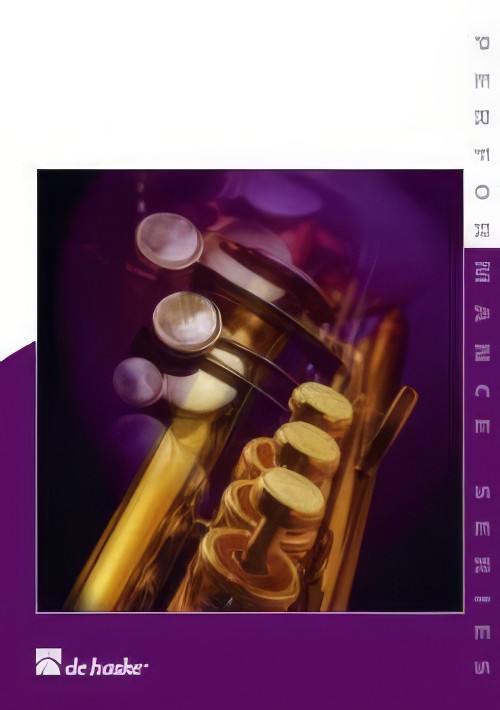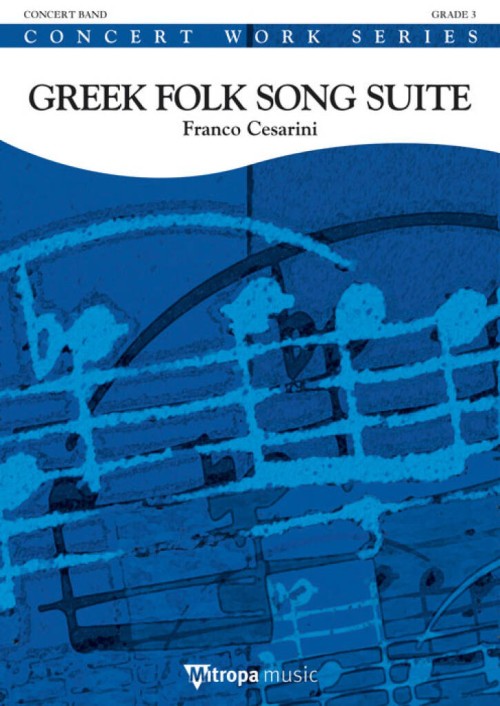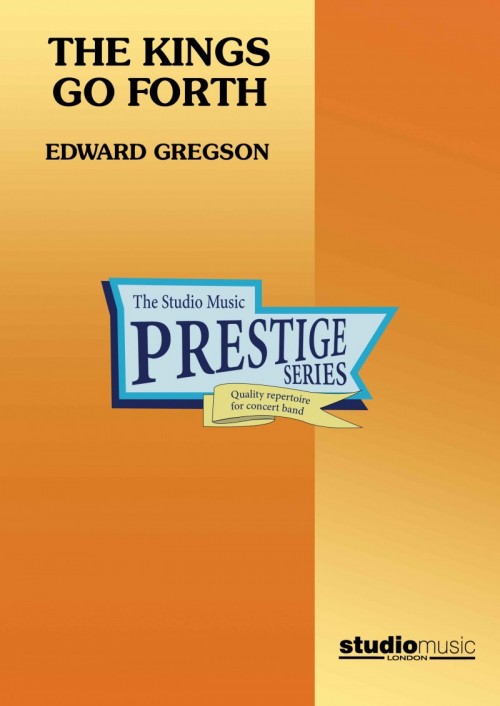Results
-
£72.99
Ottoman Dances - Jacob de Haan
Ottoman Dances is a work that consists of two dances in a Southeast-European style. One is from Bosnia-Herzegovina and the other is from Turkey. Both of these countries were part of the Ottoman Empire (1350-1918).The first movement is a relatively calm dance with dynamic contrasts and different manners of articulation. The second movement is a fast dance in common time with a lively atmosphere. Bring a bit of eastern delight into your concert with this easy new piece.
Estimated dispatch 7-14 working days
-
 £64.99
£64.99Three English Folk Dances - James Curnow
This nicely paced and skillfully orchestrated suite characterizes the three main categories of ancient English folk dances. The opening Sword Dance is lively in nature and contrasts with the WaltzSong style of the second movement. The concluding movement is a Morris Dance, typified by a rustic nature and dancers with pads of bells to accentuate the rhythm. The result is an elegant work for band with vibrance and energy. Dur: 4:30
Estimated dispatch 7-14 working days
-
 £154.99
£154.99Greek Folk Song Suite - Franco Cesarini
Greek folk music is characterised by the sound of the 'buzuki' which is often used in combination with the clarinet, the mandolin, the violin and various types of tambourines. In Greek Folk Song Suite, Franco Cesarini has elaborated on three songs belonging to this most ancient tradition. The first, O Haralambis, is in 7/8 time, a characteristic of a popular folk dance called kalamatianos. Originally, the song O Haralambis was sung to 'tease' during weddings with the text of the song refering to a young man who refuses to marry. The second movement, Stu Psiloriti, refers to an ancient song from the island of Crete. The third movement of the suite is based on the songVasilikos tha gino and is characterised by the sirtaki, probably the most popular Greek dance outside of Greece. This is Greek passion portrayed by a concert band!
Estimated dispatch 7-14 working days
-
 £64.99
£64.99Three English Folk Dances (Concert Band - Score and Parts) - Curnow, James
This nicely paced and skilfully orchestrated suite characterises the three main categories of ancient English folk dances. The opening Sword Dance is lively in nature and contrasts with the WaltzSong style of the second movement. The concluding movement is a Morris Dance, typified by a rustic nature and dancers with pads of bells to accentuate the rhythm. The result is an elegant work for band with vibrancy and energy.Duration: 4:30
Estimated dispatch 7-14 working days
-
 £72.99
£72.99Ottoman Dances (Concert Band - Score and Parts - De Haan, Jacob
Ottoman Dances is a work that consists of two dances in a Southeast-European style. One is from Bosnia-Herzegovina and the other is from Turkey. Both of these countries were part of the Ottoman Empire (1350-1918).The first movement is a relatively calm dance with dynamic contrasts and different manners of articulation. The second movement is a fast dance in common time with a lively atmosphere. Bring a bit of eastern delight into your concert with this easy piece.Duration: 3:00
Estimated dispatch 7-14 working days
-
 £137.99
£137.99Strathcarron (from Hymn of the Highlands) (Concert Band - Score and Parts) - Sparke, Philip
Sword Dance from Hymn of the HighlandsStrathcarron is a movement from Philip Sparke's Hymn of the Highlands, in which each movement reflects a different location in the beautiful Scottish highlands. Stratcarron, named after a village at the head of Loch Carron, near the Isle of Skye, takes the form of a sword dance which alternates between fast and slow tempi.Duration: 5:40
Estimated dispatch 7-14 working days
-
 £154.99
£154.99Greek Folk Song Suite (Concert Band - Score and Parts) - Cesarini, Franco
Greek folk music is characterised by the sound of the 'buzuki' which is often used in combination with the clarinet, the mandolin, the violin and various types of tambourines. In Greek Folk Song Suite, Franco Cesarini has elaborated on three songs belonging to this most ancient tradition. The first, O Haralambis, is in 7/8 time, a characteristic of a popular folk dance called kalamatianos. Originally, the song O Haralambis was sung to 'tease' during weddings with the text of the song refering to a young man who refuses to marry. The second movement, Stu Psiloriti, refers to an ancient song from the island of Crete. The third movement of the suite is based on the song Vasilikos tha gino and is characterised by the sirtaki, probably the most popular Greek dance outside of Greece. This is Greek passion portrayed by a concert band!Duration: 9:00
Estimated dispatch 7-14 working days
-
 £44.95
£44.95The Kings Go Forth (Concert Band - Score only) - Gregson, Edward
This work was commissioned jointly by the Royal Air Force Music Service and an American Universities Consortium and received its world premiere during the 1996 RAF British Tour. It is scored for large symphonic wind band, with the addition of voices.The work is a sequel to the highly successful The Sword and the Crown which was premiered in 1991 by the mass bands of the RAF (and also was an RAF commission). That work was based on music written for the Royal Shakespeare Company productions of The Plantagenets and Henry IV, parts 1 and 2 (for productions between 1988 and 1991).The Kings go Forth is similarly based on musical material for those productions. It uses different thematic elements and incorporates them into a three-movement suite entitled: The Church; The People; The State.This reflects the fact that in Henry IV Parts 1 and 2, Shakespeare introduces The People as an important element in the dramatic structure. The Church and The State are, of course, both leitmotivs throughout the entire plays. An Agnus Dei is heard at the outset from a solo voice. The ensuing Dies Irae is a fast and, at times, quite violent dance. The two sections which form the basis of the second movement, The People, concentrate on popular elements and reflect to some extent the tavern scenes in the plays. The two ideas presented are a harvest hymn reflecting the country scenes set in Gloucestershire, and a jazzy, 'up-tempo' dance based on the medieval song, Sumer is icumen in. The third movement, The State, deals with the Kings theme in the title of the piece. The juxtaposition of battle music with funeral music for Henry IV and Henry VI leads to a reworking of the leitmotif from the beginning of the work. The final section is Coronation music for Henry V, eventually leading to a triumphant climax. - Edward GregsonDuration: 17.15Recorded on QPRM 125D Festival of Music 1996, Massed Bands of the Royal Air ForceRecorded on QPRM 134D The Kings Go Forth, Royal Northern College of Music Wind Orchestra
Estimated dispatch 7-14 working days
-
 £164.95
£164.95The Kings Go Forth (Concert Band - Score and Parts) - Gregson, Edward
This work was commissioned jointly by the Royal Air Force Music Service and an American Universities Consortium and received its world premiere during the 1996 RAF British Tour. It is scored for large symphonic wind band, with the addition of voices.The work is a sequel to the highly successful The Sword and the Crown which was premiered in 1991 by the mass bands of the RAF (and also was an RAF commission). That work was based on music written for the Royal Shakespeare Company productions of The Plantagenets and Henry IV, parts 1 and 2 (for productions between 1988 and 1991).The Kings go Forth is similarly based on musical material for those productions. It uses different thematic elements and incorporates them into a three-movement suite entitled: The Church; The People; The State.This reflects the fact that in Henry IV Parts 1 and 2, Shakespeare introduces The People as an important element in the dramatic structure. The Church and The State are, of course, both leitmotivs throughout the entire plays. An Agnus Dei is heard at the outset from a solo voice. The ensuing Dies Irae is a fast and, at times, quite violent dance. The two sections which form the basis of the second movement, The People, concentrate on popular elements and reflect to some extent the tavern scenes in the plays. The two ideas presented are a harvest hymn reflecting the country scenes set in Gloucestershire, and a jazzy, 'up-tempo' dance based on the medieval song, Sumer is icumen in. The third movement, The State, deals with the Kings theme in the title of the piece. The juxtaposition of battle music with funeral music for Henry IV and Henry VI leads to a reworking of the leitmotif from the beginning of the work. The final section is Coronation music for Henry V, eventually leading to a triumphant climax.- Edward GregsonDuration: 17.15Recorded on QPRM 125D Festival of Music 1996, Massed Bands of the Royal Air ForceRecorded on QPRM 134D The Kings Go Forth, Royal Northern College of Music Wind Orchestra
Estimated dispatch 7-14 working days
-
 £174.99
£174.99Mexican Pictures - Franco Cesarini
Your band will love getting acquainted with Mexican Pictures, a suite in four movements based on Mexican folk music. The first movement, El Butaquito, is based on a very lively folk-song of the same name and is characterised by its many contrasting rhythms. The second movement, Romance Mejicano, creates a peaceful and romantic atmosphere. The title of the third movement, Ballaviejo, means 'Antique Dance', in which the word antique refers to the rhythms that were taken to America by Africa's black population. La Charreada, the final movement, depicts the popular Mexican Rodeo, where the action in the arena is usually supported by instrumental ensembles, the so-called 'Mariacchi'.
Estimated dispatch 7-14 working days
